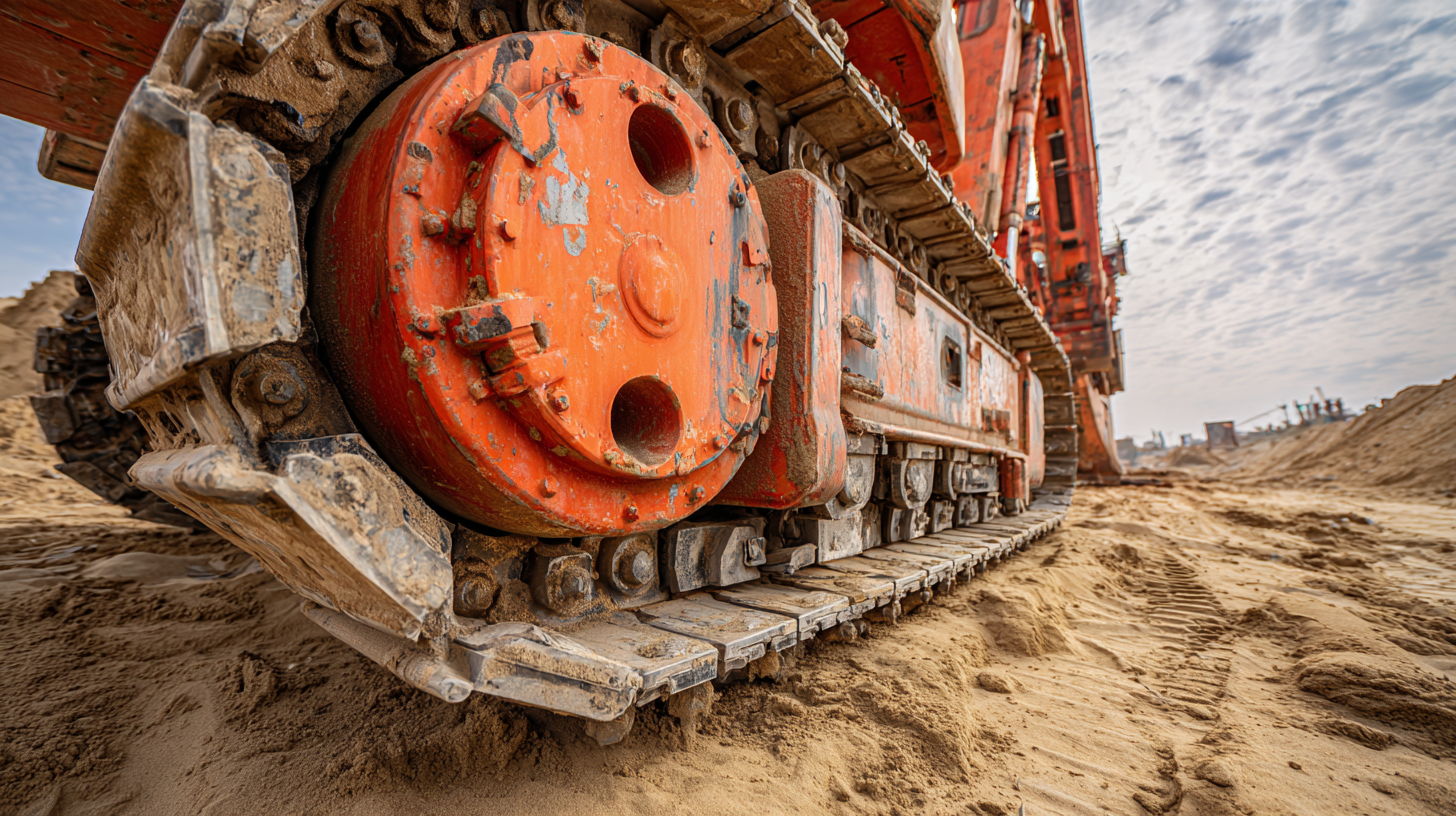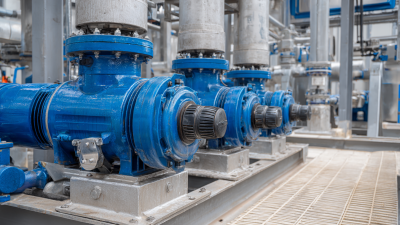
Universal Pumping | High Pressure Pumps
High Pressure Pumps for Difficult to Pump Slurry, Sludge, and Food Waste.
Choosing the right sand pump for construction needs is crucial for enhancing operational efficiency and ensuring project success. According to the Global Sand Pump Market Report, the demand for sand pumps is expected to grow at a compound annual growth rate (CAGR) of 4.8% from 2021 to 2026, driven by increasing construction activities and infrastructure development worldwide. In particular, sand pumps play a vital role in the effective management of materials in various applications, including dredging, sand mining, and aggregate processing. Understanding the specific requirements of your project, such as the type of sand being transported and the distance it needs to be moved, is essential for selecting the appropriate sand pump. By adhering to industry standards and leveraging expert insights, construction professionals can make informed decisions that not only meet regulatory requirements but also optimize performance and reduce operational costs.

When selecting a sand pump for construction purposes, it is essential to understand the different types available and their specific applications. Centrifugal sand pumps are among the most commonly used, especially for transporting sand and slurry in high-flow scenarios. These pumps operate by converting rotational energy into kinetic energy, making them ideal for projects requiring constant water flow, such as dredging or beach nourishment.

Another type is the submersible sand pump, designed to work underwater. These pumps are particularly effective for dewatering sites or excavations, as they can operate at significant depths without losing efficiency. Their compact design allows for easy transport and operation in tight spaces, making them highly versatile for various construction activities.
Furthermore, diaphragm pumps also play a crucial role in applications where solid materials need to be handled delicately, ensuring that the integrity of the sand is maintained while still achieving effective transfer. Understanding these distinctions will help you choose the right sand pump tailored to your construction needs, ensuring optimum performance and compliance with industry standards.
When selecting a sand pump for construction applications, understanding key specifications is crucial for ensuring optimal performance. One of the primary factors to consider is the pump's flow rate, typically measured in gallons per minute (GPM). This specification indicates how efficiently the pump can transport sand and other materials. Depending on the scale of your project, a higher flow rate may be necessary to keep up with material demands, especially in large-scale construction sites.

Another essential specification is the pump's head size, which measures the vertical height the pump can move sand. This is particularly important in construction scenarios where sand needs to be lifted from a lower to a higher elevation. Additionally, it's vital to evaluate the pump's compatibility with various sand types, as different materials can impact both performance and longevity. By focusing on these key specifications—flow rate and head size—as well as material compatibility, you can better ensure that the chosen sand pump meets industry standards and successfully fulfills your construction needs.
When selecting a sand pump for construction projects, understanding industry standards is crucial. According to the American Concrete Pumping Association, the efficiency of sand pumps can significantly affect the overall productivity of construction operations. Industry standards dictate not only the performance metrics, such as flow rate and pressure, but also ensure safety and compliance with environmental regulations. For instance, pumps that adhere to ISO 13709 standards are designed to handle abrasive materials effectively, minimizing wear and prolonging service life.
Furthermore, a report by the National Institute of Standards and Technology indicates that modern sand pumps should achieve a minimum flow rate of 500 gallons per minute for effective sand transport in medium to large construction sites. This performance benchmark ensures that sand delivery aligns with project timelines while maintaining the quality of the bulk materials used. In addition to flow rates, construction companies should also consider the pump's total dynamic head (TDH) specifications to ensure it meets the required lift and pressure for the specific application. By adhering to these industry standards, construction managers can enhance productivity and reduce long-term operational costs associated with improper equipment choice.
Choosing the right sand pump starts with understanding the specific size and capacity requirements dictated by your construction project. According to the American Concrete Institute, the volumes of sand needed for concrete mixtures can significantly impact the overall efficiency of the pumping process. For instance, projects typically requiring over 100 cubic yards of sand may necessitate a pump with a capacity of at least 400 gallons per minute (GPM) to ensure timely delivery without compromising on material quality.
Furthermore, industry standards emphasize the importance of matching pump size with the intended distance the sand must be transported. Data from the National Ready Mixed Concrete Association indicates that for distances exceeding 200 feet, selecting a high-capacity pump can mitigate pressure losses and maintain an uninterrupted flow. Understanding these requirements allows contractors to optimize both performance and operational costs, confirming that the chosen pump aligns with the specific characteristics of the job at hand.
When selecting a sand pump for construction projects, one key decision is whether to opt for an electric or diesel-powered model. Electric sand pumps are lauded for their efficiency and lower operational costs. According to the U.S. Department of Energy, electric pumps can reduce energy consumption by up to 30% compared to diesel models, making them an environmentally friendly choice. They are ideal for indoor or noise-sensitive applications, where emissions and noise pollution are critical concerns.
On the other hand, diesel sand pumps provide unparalleled mobility and power, particularly suited for remote construction sites where electricity is scarce. The American Society of Civil Engineers reports that diesel pumps can handle higher flow rates and larger particle sizes, making them advantageous for heavy-duty tasks. This increased flexibility allows contractors to work in diverse conditions, ensuring project timelines are upheld without delays.
**Tips:** When choosing between electric and diesel sand pumps, assess your project's specific needs, including location, power availability, and environmental impacts. Evaluate the total cost of ownership, which includes not just the purchase price but also maintenance, fuel, and operational efficiency. Additionally, consider investing in pumps with variable speed drives to further enhance efficiency and adaptability, ultimately leading to cost savings over time.






Universal Pumping
625 Apache Trail
Woodstock, GA 30189
Mon - Fri | 9:00 AM - 5:00 PM
Universal Pumping is staffed with industry professionals with 20-45 years experience with high pressure pumping systems. We represent only the “elite producers” in pump manufacturing: Britain’s EMS and Germany’s EMMERICH. Our engineering and manufacturing approach is conservative, and we do not use “guess work” in the design or sales of our pumping and filtration equipment.



